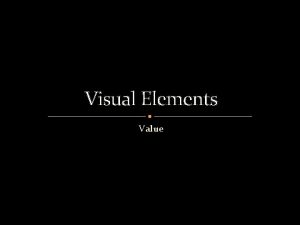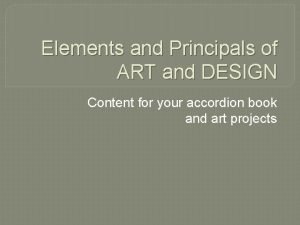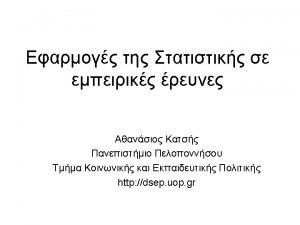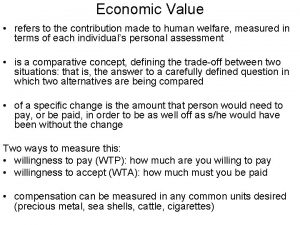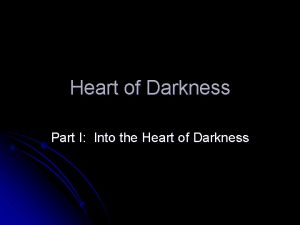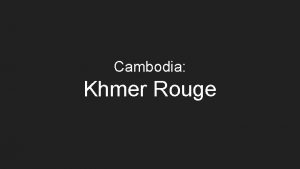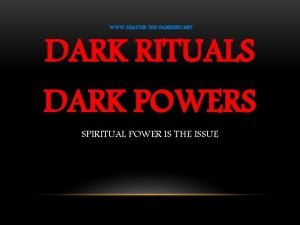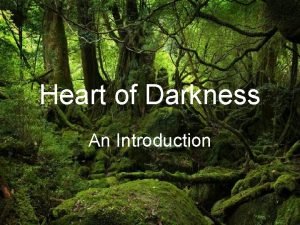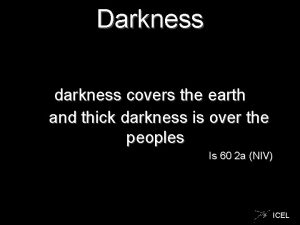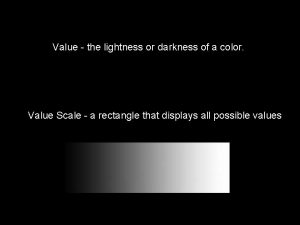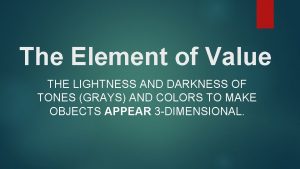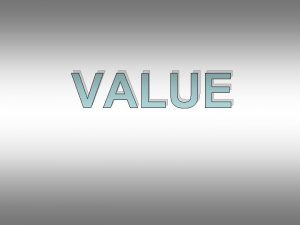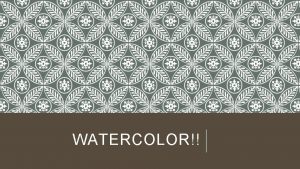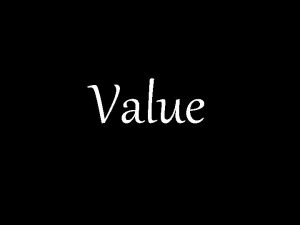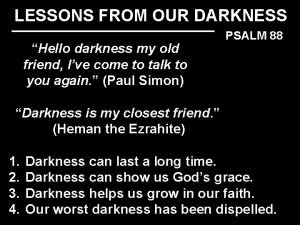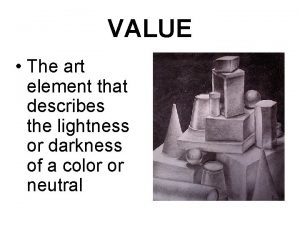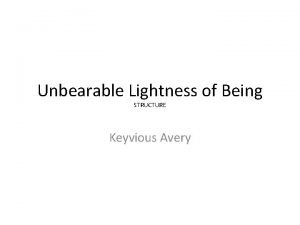Value Value refers to lightness or darkness of











- Slides: 11

Value • Value refers to lightness or darkness of a color or tone. • Value shifts help us “feel” the shape of an object by showing us how light illuminates forms and creates shadows. • An object may be the same color, but varying amounts of light give it different values. • Value describes form, creates focal points, and defines space.

Gray Scale

Create your own Gray Scale Finder • Draw a rectangle in your sketchbook that is ¾ of an inch by 5 ¼ inches. Then mark off 7 equal squares horizontally. • The middle square is Middle Gray, the first square is Black, and the last square is White. • Fill in the gradual value shifts from Black to Middle Gray to White.

Light defines Value • Reflected light defines the shape and volume of objects. • The position of the light source affects the amount of variation in value and the size/position of shadows. • The appearance of value changes depending on what is next to it. In other words, value is not only influenced by light source, but also by adjacent values.

Value Structure

Additional Value Terms • Value contrast is the relationship between areas of light and dark. • High contrast (high key): a few values widely separated (example: black & white). • Low contrast (low key): many values in a narrow range. • Chromatic grays: when you mix colors to create a grayed neutral tone. • Achromatic grays: when you mix only black and white to create gray • Chiaroscuro: from chiaro (clear, bright) and oscuro (dark, obscure)—dramatic value contrast.


Paper Bag Value Drawing with Shadows • Crumple a sheet of paper and draw it in your Sketchbook. Pay particular attention to the changes in value. Try not to focus on the linear aspects of the drawing, but make it more about planes, gradations, and value shifts. • Start with a very light contour drawing to define the space your drawing will take on the page (your drawing should use most of the page), then focus on the value changes and build up the form with tonal value. • Squinting at the object is the best way to focus on value structures.

Basic Mark-Making Shading Methods for Pen and Ink • Hatching (parallel lines) are straight marks that extend in the same direction. • Crosshatching consists of two or more sets of parallel lines that are stroked in different directions and intersections. • Stippling is a grouping of dots placed closely to create value. • Scumbling (scribble) is a free flowing controlled mark that loops and twists in a sketchy manner. • Wavy lines are drawn side by side in a repetitive pattern. In your Sketchbook create 5 long rectangles on a single page. In each rectangle use one of the mark-making methods listed on the left to build up value and create a smooth transition from white to black. Label each example by the type of line used.


This Weeks Assignments • Reading Assignment outlined in Course Schedule • Finish you Bi-Weekly Assignment Next Week In addition to the regular class materials, you will need black paint, a sponge brush, and things to print textures off of for the next class. Examples: crumpled fabric, tread patterns on athletic shoes, pencil erasers—something that you can wash paint off of or throw away
 The relative lightness and darkness of surfaces.
The relative lightness and darkness of surfaces. Principals of art
Principals of art Value creation value delivery value capture
Value creation value delivery value capture Value added refers to education
Value added refers to education #value! refers to
#value! refers to Without light there is no darkness
Without light there is no darkness Heart of darkness modernism
Heart of darkness modernism Heart of darkness part 2 summary
Heart of darkness part 2 summary Settings in jekyll and hyde
Settings in jekyll and hyde Heart of darkness cambodia
Heart of darkness cambodia Shatterthedarkness.net
Shatterthedarkness.net Heart of darkness introduction
Heart of darkness introduction
